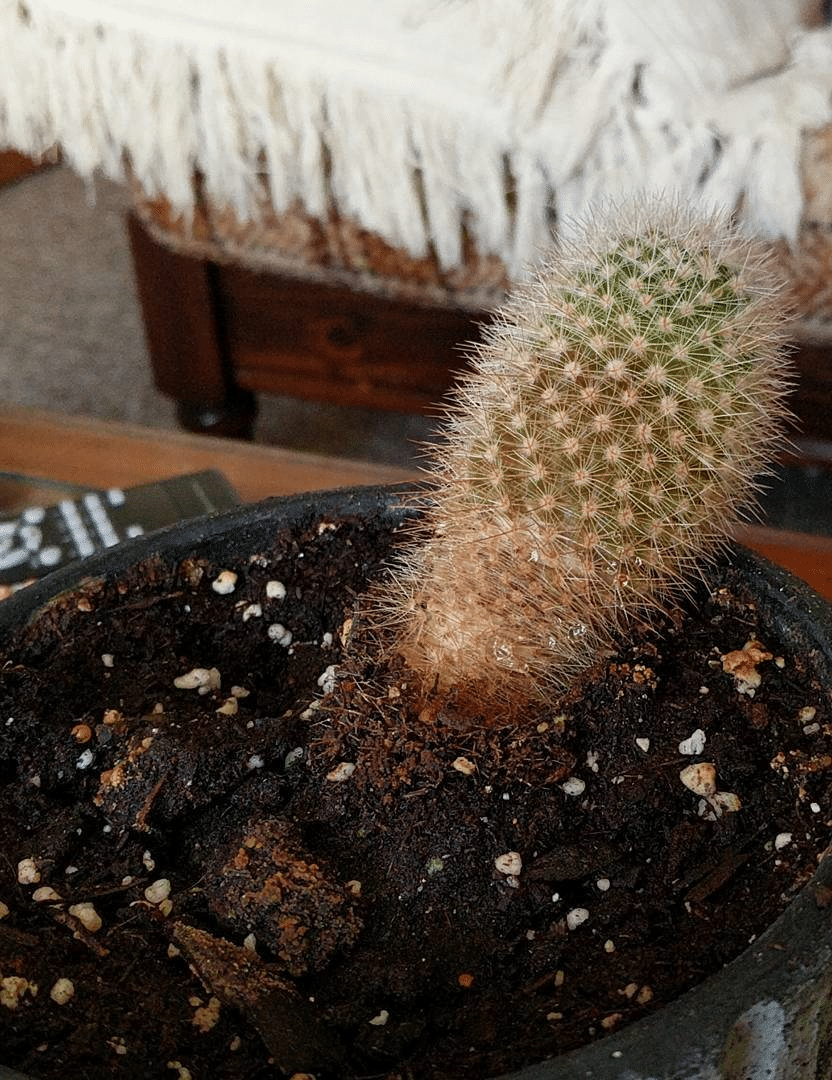Newbies, be aware while watering a succulent like a cactus, as too much water can make your dome pet lose its vigor.
So better to analyze the symptoms earlier. And even better to avoid overwatering the cactus.
Look through the article to learn all about overwatered cactus and ways to prevent it.
Table of Contents Show
How Can I Tell If My Cactus Is Overwatered?
Noticing the physical symptoms is the first step in identifying the problem your cactus is facing.

Some other noticeable signs to tell what an overwatered cactus look like are:
- Split pads: The cactus fed too much water starts splitting after a long-drought period. This usually occurs due to excessive absorption instead of gradual uptake that causes a skin burst.
- Yellow and wilted parts: Overwatered cactus lack oxygen and nutrient supply, making them have yellow stems and leaves. After a while, they start to wilt.
- Mushy and plumpy appearance: Due to too much water in the reservoir, the catus turns spongy and mushy. The skin starts to appear puckered, wrinkles down, and folds.
- Black and brown spots: Stems and leaves of cactus start having black spots due to lack of oxygen as the roost is drowning. It can also cause them to fall to the ground.
- Soggy soil: Soil that remains damp for a more extended period, even after the quick absorption rate of the cactus, might be due to overwatering.
- Root rot: You can know if your cactus has root rot by noticing the rotten smell from the soil. It is precisely due to fungus thriving in soggy conditions.
What To Do If Cactus Is Overwatered?
If your cactus is suffering from the initial stage of overwatering, immediately stop watering and run to find the cure.
You can fix an overwatered cactus by following the given methods.
- Place the pot under direct sunlight for at least two days without watering.
- Remove the cactus from its pot and keep it over a newspaper to soak excess water.
- Add pebbles to boost drainage, or drill drainage holes and wait for the result.
- If the soil still appears soggy, the only option is repotting the cactus, as the problem lies in the soil.
- You can save a soggy cactus by removing the plant from its pot and trimming off brown to black mushy roots with a pruner.

- Then fill a two-inch bigger pot than the current one with well-draining cacti soil.
- Restrain from watering the cactus until the soil dries out completely.
However, if the situation is beyond recovery, you can save an overwatered cactus without repotting by cutting off a healthy part among the damaged ones and propagating it.
How To Prevent Cactus From Drowning In Too Much Water?
Prevention is always better than cure which applies even to the plants that suffer due to your negligence or overcare.
Apply the tips below from the beginning of the cactus care to prevent future mishaps.
- Provide the cactus indoors at least 4 to 6 hours of sunlight daily.
- Reach out for bottom watering instead of top watering to allow slow uptake.
- Line the pot’s base with pebbles but keep it away from the roots as it can lead to rotting.
- Maintain a schedule of watering cactus once every 7 to 10 days in spring and summer. In contrast, please keep it to monthly during winter.
- However, check at least 8 cm of soil from the top for moisture before watering.
- If the humidity is above 60%, you might have to use a dehumidifier to bring it back to the 40 to 60 % range, as humidity affects the moisture availability to cactus.
- Also, choose a porous pot like terracotta with enough drainage holes to allow water to flow in and out quickly.
- Choose a well-draining, highly porous mix using potting soil, coarse sand, pumice or perlite, and pine bark in a 3:3:1:1 ratio.
From Editorial Team
Extra Tips!
After cutting any mushy and damaged part of the overwatered cactus, allow it to heal and do not water it overhead to prevent infection spread.
Meanwhile, opt out of using garden potting soil as it has higher water retention capability.


